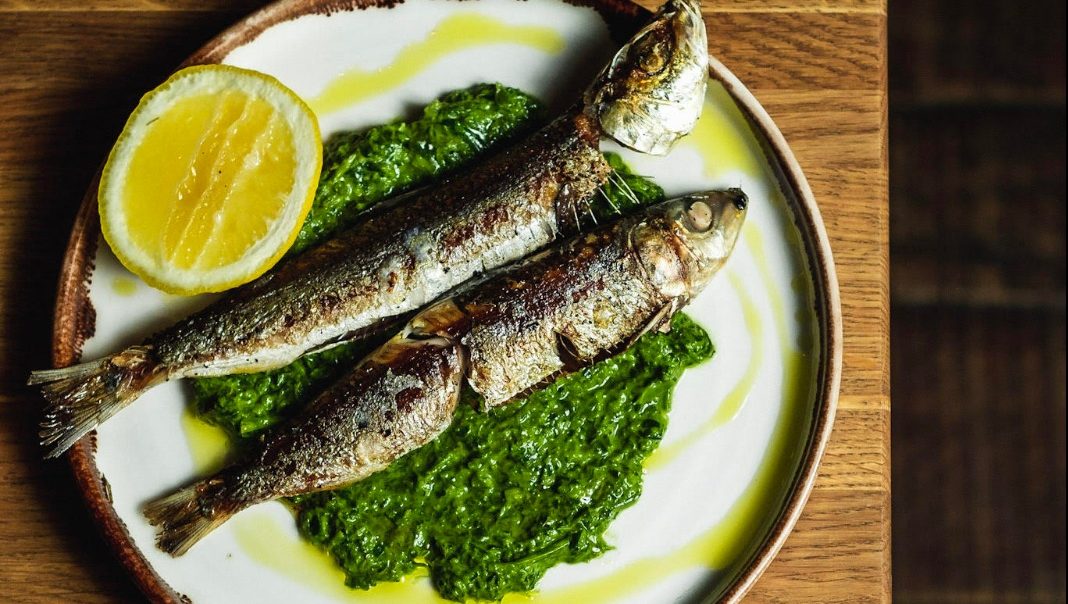More than 20 years ago, a group of fishers and industry folk in Newlyn, Cornwall, proceeded to rebrand pilchards as “Cornish sardines” so as to limit their demise. Pilchards have been caught off the coast of Cornwall for centuries, possibly millennia, and they’ve been exported out of the peninsula since 1555. Postwar, their popularity dwindled, though, and locals needed to take action.
To a point, the new name and fresh image worked. Ten years later, Cornish
sardines, in tins painted with wholesome and historic scenes of fishers at work, are found in the likes of Waitrose and M&S, and eaten with renewed fervour. The Pilchard Works makes two varieties of sustainable sardine tins, and the fish that go into them are caught close to the shores of Newlyn and neighbouring Penzance, in small boats.
After being caught and landed in Newlyn, the fish are sorted and sent for canning in Brittany, where they are filleted and flash-fried to a process developed and used since 1853. This is done by hand before olive oil, tomato sauce or some other sort of marinade is added to preserve the fish.
I recommend buying a tin of the sardines – the ones in tomato sauce are
excellent – and popping a few fillets on hot, buttery toast. You could add garlic, parsley, and a squeeze of lemon too – you could get all Spanish about it, certainly. After all, tinned fish are all the rage these days – just ask Mitch
Tonks from Rockfish, who recently brought out a high-end range of his own
– and people are waking up to their vitality. In a cost of living crisis, canned
goods, at whatever price point, will fly.
But there’s also a consideration as regards sardines generally: they’re a cheap, reliable fish, available here. We might all look to the continent, where
they are afforded more respect and eaten with more regularity. Sardines are making more appearances on restaurant menus today, and we might heed their example.
And so here is a simple but affirming recipe for sardines in a green sauce, a dish eaten across western Europe, from Otis Smith and the team at the newly opened 10 Tib Lane in Manchester.
SARDINES IN GREEN SAUCE
SERVES FOUR
SARDINES:
One or two whole sardines per person (depending on size of the fish), gutted and cleaned – ask the fishmonger to do this for you
GREEN SAUCE:
200g flat leaf parsley
50g mint
1 dill pickle (roughly chopped)
1 tbsp capers
1 tbsp Dijon mustard
4 tbsp extra virgin olive oil
1 tbsp red wine vinegar
Sea salt to taste
METHOD:
Add all of the green sauce ingredients into a blender and blend until a rough sauce is made.
Heat a pan on high, add a little oil and fry the sardines for 2-3 minutes per side, depending on size.
Spoon the green sauce on to a plate and add the cooked sardines.
Season with a little salt and a squeeze of lemon.




